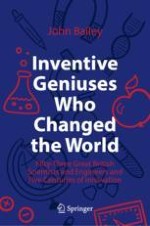2022 | OriginalPaper | Chapter
6. 17th and 18th Century Multi-disciplinary Scientists. Motion, Forces, Gravity and Light
Author : John Bailey
Published in: Inventive Geniuses Who Changed the World
Publisher: Springer International Publishing
Activate our intelligent search to find suitable subject content or patents.
Select sections of text to find matching patents with Artificial Intelligence. powered by
Select sections of text to find additional relevant content using AI-assisted search. powered by
